
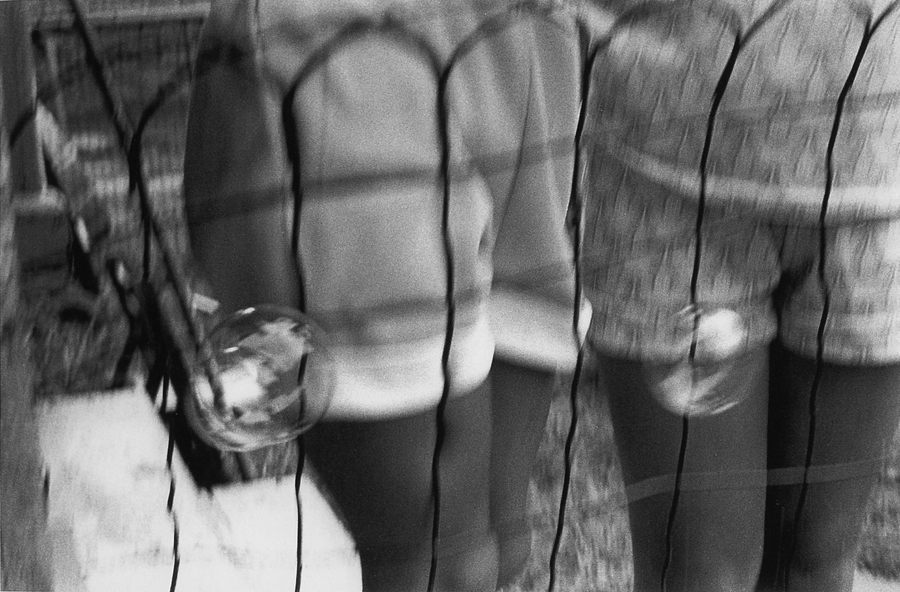
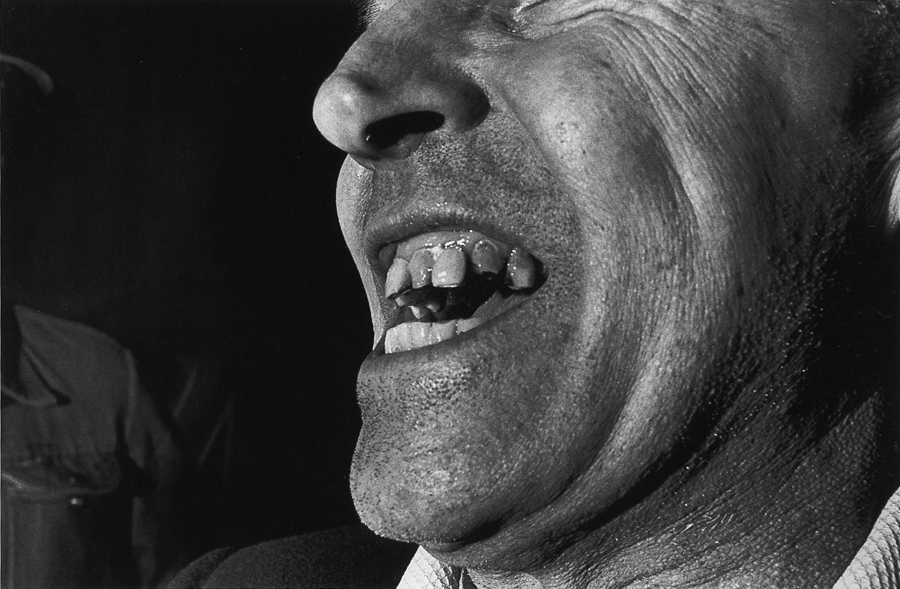
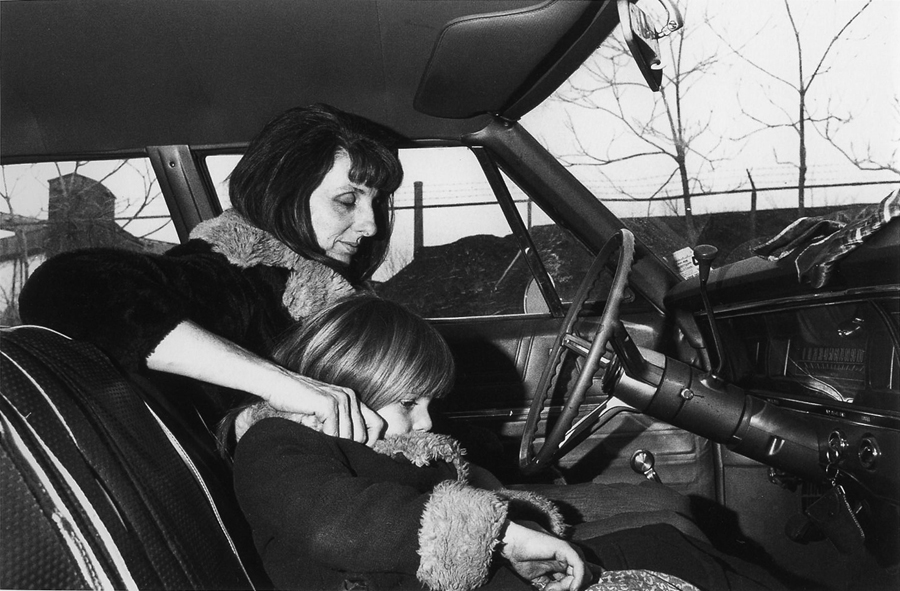
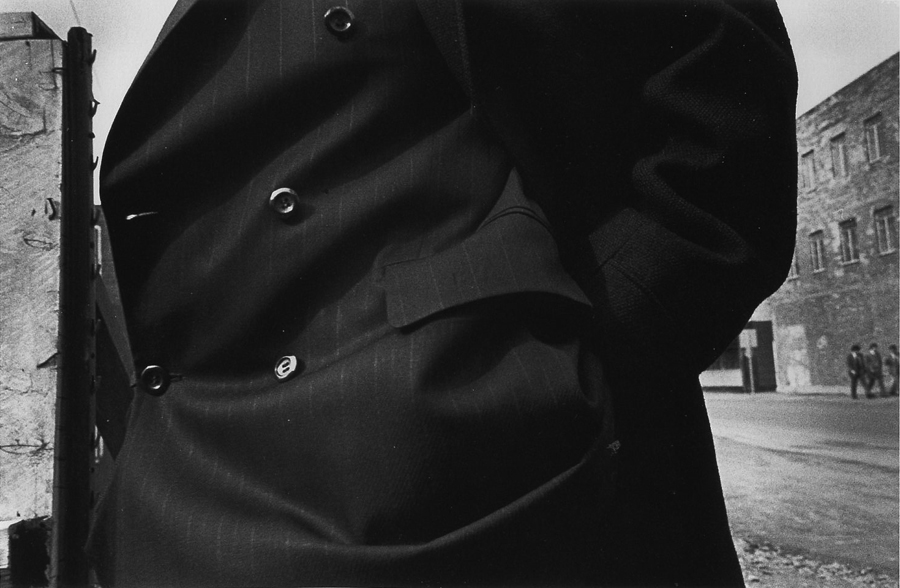



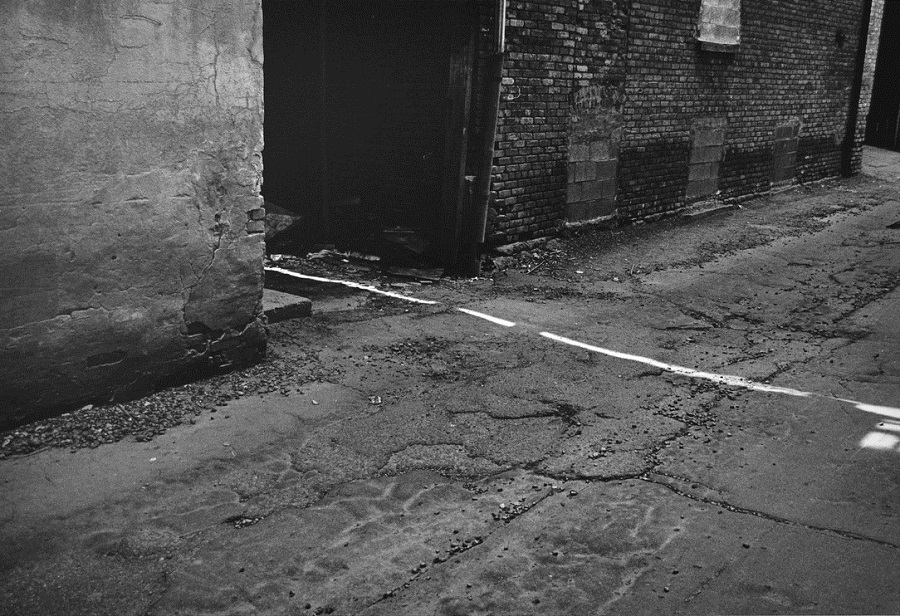
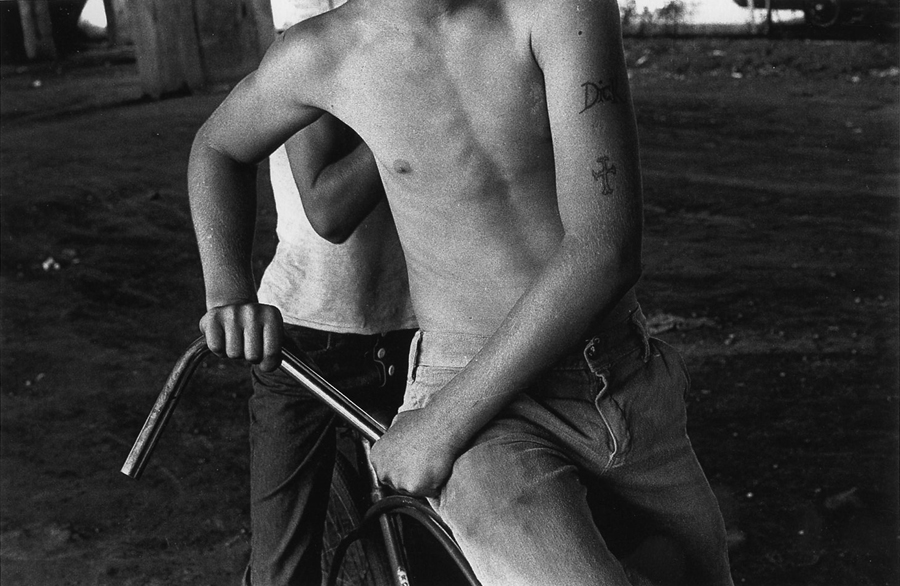
“I come in a bit closer. So it’s not a play; it’s a macro-play that I’m dealing with. It’s a macro-play that I create with my own intrusion into the scene…”
“Grim Street” is a selection and book of photographs by street photographer Mark Cohen. Made in the 1960s, 70s, and 80s on the streets of Wilkes-Barre, a former mining town in Pennsylvania, the images offer a dark and loaded view of the city and its citizens. Cohen has called these pictures “grab shots,” referring to how he shot from the hip with his camera prefocused. The photographs, aggressive encounters shot with the bang of an unexpected flash at super close range, give the viewer a range of cropped and often headless characters that react to Cohen’s camera.
Interview excerpts:
Anne Wilkes Tucker: I was thinking about Arbus when I asked if you were drawn to children. I’ve been reading her notebook where she talks about finding certain places that were more conducive to what she was seeking to photograph. Were there certain places that you returned to because of a kind of energy?
Mark Cohen: Oh yeah. There were certain places in Wilkes-Barre, certain alleys and streets, and places that I knew would be great on a summer evening, when it was hot.
They are not expensive neighborhoods, and the people are all outside, sitting on their porches with their children running around. There is a lot of flesh exposed, and you take a picture of some little kid’s shoulder and you blow it up to a sixteen by twenty print. I started to get interested in the grain of the print and the sensuality of a forearm or a leg, or something like that-not just with children, with anybody. Sometimes there was a homemade tattoo on it, which made it more interesting.
“The whole county is my studio. I used to go work under a certain bridge if it was pouring, because people used to hide there from the rain.”
Anne Wilkes Tucker: Did the people begin to know you?
Mark Cohen: Yeah, but only a little. I still walk around Wilkes-Barre and Scranton and people will say, “Hey, you taking any more pictures?” I worked the same neighbor¬hoods between Wilkes-Barre and Scranton for around thirty years, but that’s about as far as people got to know me. Now, the whole town has changed. Before the interstate highway system, Wilkes-Barre was this little city. The downtown had a certain density and there were people on the street, so I could work. It wasn’t like William Klein’s pictures in New York or Tokyo, with an incredible density of people. Wilkes-Barre never had that kind of intensity, but there were a lot more people around in the summer and sometimes they would get to know me. That made it a little more comfortable-or maybe uncomfortable.
Anne Wilkes Tucker: So the vast majority of the pictures are in places you know intimately.
Mark Cohen: Oh, sure. I’m in my backyard making these. The whole county is my studio. I used to go work under a certain bridge if it was pouring, because people used to hide there from the rain. If it was a cloudy day, I would go to a different place. So I used these neighborhoods like a set. And I still use them like that. There are certain places I know that, if I go there in the evening-I like to take pictures at dusk-they will have a certain flavor even today. But nobody knows me today.
Anne Wilkes Tucker: But I think that these photos are the antithesis of Henri Cartier-Bresson’s “decisive moment.” Your pictures are the moment before or after the decisive moment. His moment is like a traditional play’s climax, but with your pictures we can’t know what is decisive because the narrative is not clear. The viewer can invent all sorts of scenarios.Mark Cohen: Oh, sure. I’m in my backyard making these. The whole county is my studio. I used to go work under a certain bridge if it was pouring, because people used to hide there from the rain. If it was a cloudy day, I would go to a different place. So I used these neighborhoods like a set. And I still use them like that. There are certain places I know that, if I go there in the evening-I like to take pictures at dusk-they will have a certain flavor even today. But nobody knows me today.
Anne Wilkes Tucker: But I think that these photos are the antithesis of Henri Cartier-Bresson’s “decisive moment.” Your pictures are the moment before or after the decisive moment. His moment is like a traditional play’s climax, but with your pictures we can’t know what is decisive because the narrative is not clear. The viewer can invent all sorts of scenarios.
Mark Cohen: Well, when you say it’s like an overlook or an extraction from a play, maybe it seems that way because Bresson works from so much farther away from the subject than I do. He’s working in slow motion, and old Europe is unfolding before us. (…) The photographer is ten feet away.(…) I come in a bit closer. So it’s not a play; it’s a macro-play that I’m dealing with. It’s a macro-play that I create with my own intrusion into the scene…
Anne Wilkes Tucker: When you say, “I’m making pictures to put in the drawer,” there is a kind of determination on your part to continue with what is in your particular eye when I’m sure there were dealers saying to you, “If you’d back off a little, it’d be easier to sell them.” Were there not?
Mark Cohen: Well, no. They didn’t make any effort to sell them because they weren’t expensive enough. They were only six hundred dollars, so it didn’t matter to the dealers, or to the Marlborough Gallery or to Virginia Zabriskie either. The galleries thought that my pictures were strong. I got good reviews, but they never sold many. But that was okay. It’s still hard to sell them. For instance, I sold the headless horseman picture to somebody and he brought it back because it frightened his wife. Now, if I made landscapes or still lifes I guess that it would be easier. Or if I made pictures of Paris or New York. I don’t know.
EXPLORE ALL MARK COHEN ON ASX
(All rights reserved. Interview excerpts @ Anne Wilkes Tucker. Images @ Mark Cohen.)
